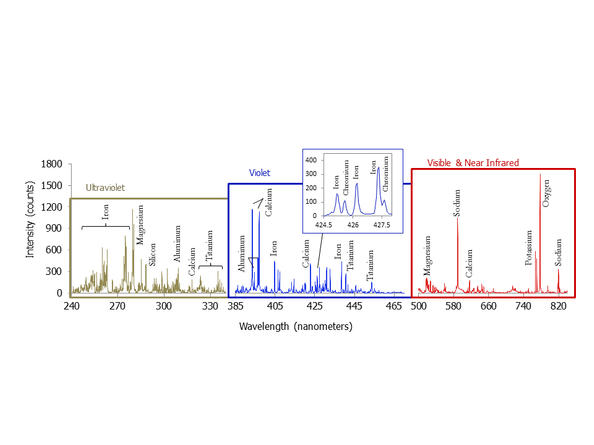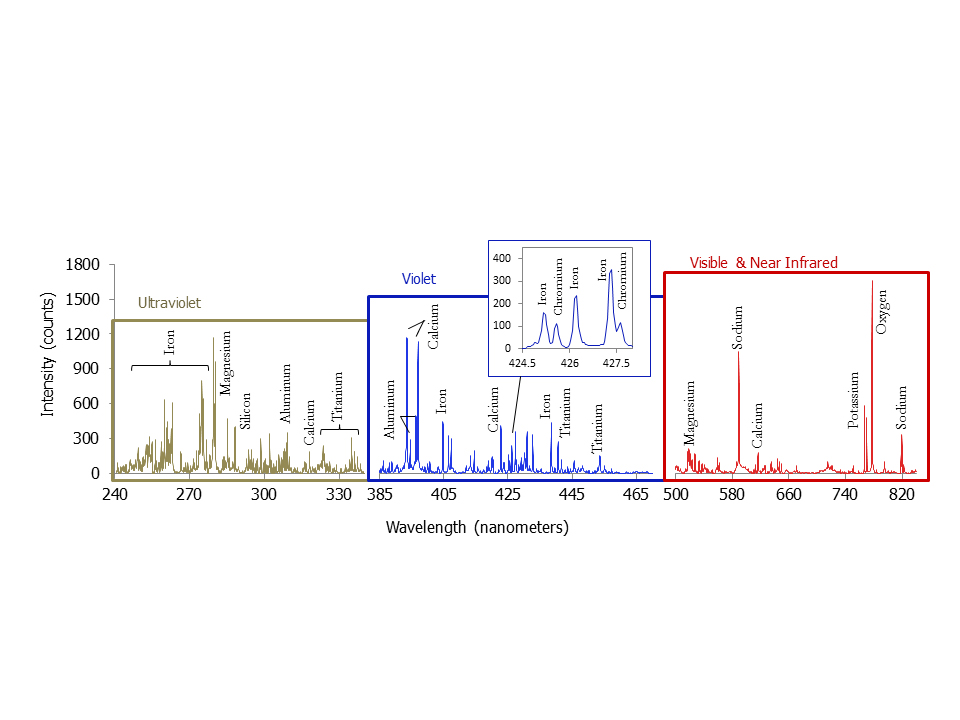ChemCam Spectrum from Martian Rock Target ‘Ithaca’

| Credit | NASA/JPL-Caltech/LANL/CNES/IRAP/UNM |
|---|---|
| Language |
|
This graph shows a spectrum recorded by the Chemistry and Camera instrument (ChemCam) in NASA's Curiosity Mars rover. The instrument measured intensity of light at 6,144 wavelengths of ultraviolet, visible and infrared light emitted when it fired its laser at a rock target called "Ithaca." This spectrum averages data from multiple laser firings at the same point on the rock, the lowest point in a series of targeted points on the same rock examined on Oct. 30, 2013. The firings at this particular point included the 100,000th laser shot by Curiosity on Mars.
The spectrum is typical of Martian volcanic (basalt) material. Although Ithaca is a sedimentary rock, the particles in the sediments that became the rock originated in igneous source rocks. The elements identified from the spectrum include a standard major-element suite of silicon, magnesium, aluminum, calcium, sodium, potassium, oxygen and titanium. Chromium and manganese, though not labelled, were also present.

